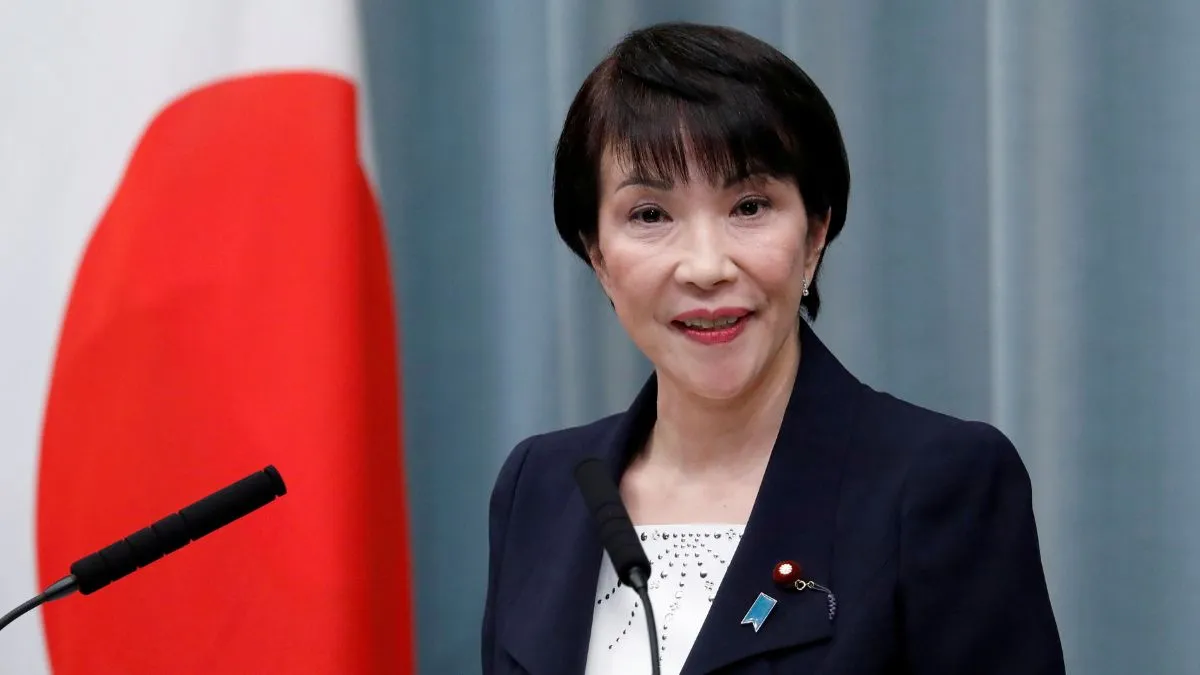- By Supratik Das
- Sat, 04 Oct 2025 03:58 PM (IST)
- Source:JND
Japan news: In a historic turn of events, Japan is set to welcome its first-ever female prime minister, Sanae Takaichi, after she secured victory in the ruling Liberal Democratic Party (LDP) leadership election on Saturday. The 64-year-old conservative lawmaker now leads the long-dominant party, paving her way to succeed outgoing Prime Minister Shigeru Ishiba later this month.
Who Is Sanae Takaichi?
Takaichi has been involved in politics for over thirty years. She was first elected to the House of Representatives in 1993 and is a native of Nara Prefecture. Takaichi, a Nara native, first entered politics in 1993 and has served in multiple cabinet positions. She exudes toughness and discipline and is well-known for her love of motorcycles and heavy-metal drumming days. She has served in a number of ministerial positions over the years, including those for Internal Affairs & Communications and, more recently, Economic Security. She is widely considered a protege of the late Shinzo Abe, aligning with his conservative and nationalist agenda.
On foreign policy, Takaichi is viewed as a staunch nationalist. She has publicly opposed reforms such as same-sex marriage, dual surnames for married couples, and female imperial succession. She frequently visits the controversial Yasukuni Shrine, a symbol many in Asia view as linked to militaristic nationalism. Economically, she supports expansionary fiscal policy, echoing elements of Abe’s “Abenomics,” and has criticized recent interest rate hikes by the Bank of Japan.
Taiwan’s President Lai Ching-te congratulated her, calling Takaichi a “steadfast friend” and expressing hope for deeper cooperation in trade, security, and technology.
Why Many Women Remain Unconvinced?
Takaichi takes charge of the LDP at a difficult time. The party has been losing public trust due to rising prices and economic stagnation. She defeated former environment minister Shinjiro Koizumi, 44, in the runoff vote, promising to “restore faith in leadership and turn people’s anxieties into hope.” A parliamentary vote on October 15 is expected to confirm her as prime minister, as the LDP-led coalition holds a majority in both houses.
Decades of structural discrimination, workplace biases, and rigid gender norms remain formidable barriers for Takaichi. Despite low female representation in politics, women currently form just around 15 per cent of the lower house. Takaichi’s platform offers scant signals of systemic change.
Her rhetoric and record tend to appeal more to conservative men than to women who are calling for equality. Her prior affiliation with patriarchal party factions and her resistance to reforms about female succession and family names cast doubt on her capacity or willingness to advocate for women's rights. Some women are concerned that her election is being used as a show of modernity without any genuine policy commitment to end inequality.
As a result, Japan finds itself at a crossroads, on the verge of breaking through a symbolic barrier, but still plagued by systemic inequalities. It is unclear if Sanae Takaichi's leadership will pave the way for significant change or if it will just be another phase in the nation's conservative history.

